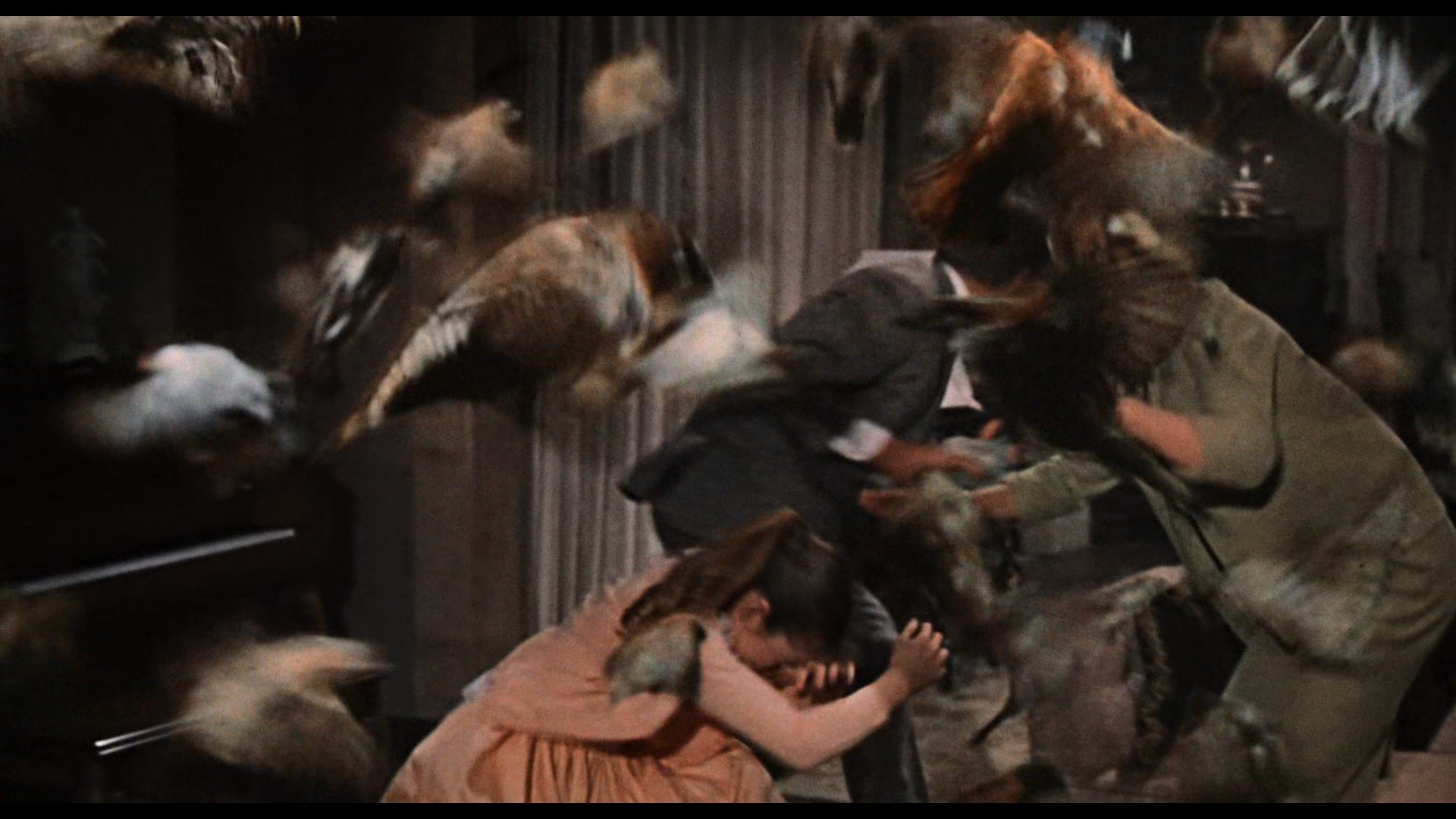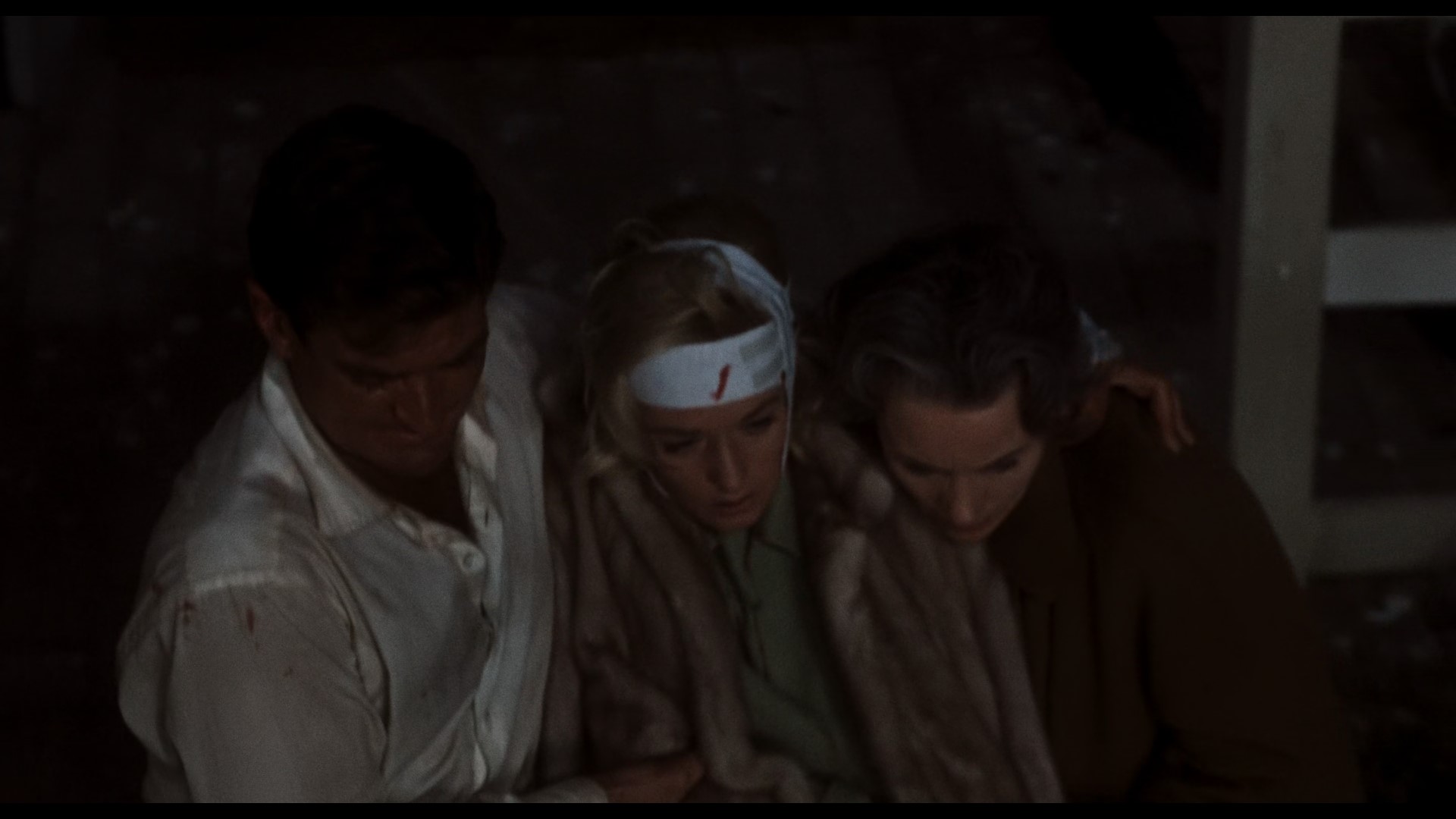Alfred Hitchcock’s film ‘ The Birds ‘ depicts the horror of the unknown and the loss of patriarchy due to bird attacks, and explores the effects of these fears on humanity and society through various defense mechanisms and changes in human relationships.
The Birds, directed by Alfred Hitchcock, is a horror movie that, as the title suggests, depicts an unknown natural disaster in the form of a bird attack. The movie uses only the sounds of birds to create tension and fear, without music, and even basic sound effects such as screams, which was a new technique at the time. Hitchcock wanted to explore the nature of fear through this film, which is not just about external threats, but also about our own internal fears.
Fear in the movie takes two forms. The first is the “newly manifested fear of the unknown,” which intensifies toward the end of the movie and envelops the entire storyline. This unknown horror symbolizes the forces of nature that humans cannot control, maximizing the anxiety behind civilization. Another horror is the “horror of loss in a patriarchal order,” which Mitch’s mother experiences. Mitch’s mother is terrified of losing her husband and being alone, which means losing her power and role in a patriarchal society. This is evident in the way her mother is wary of Melanie, who is taking care of Cassie, in the first half of the film. Also, the scene in which a group of women in the diner during the bird attack accuse Melanie of being evil because she is with Mitch, the only male, can be seen as a metaphor for the fear that not only Mitch’s mother, but most women at the time, experienced.

The former, “fear of birds,” is represented by a gradual buildup of tension, increasing fear, and more direct physical pain. The latter, the fear of loss in patriarchy, comes suddenly with the death of her husband, and is expressed in more intrinsic psychological pain, such as anxiety and confusion. Both fears deprive individuals of a stable home. The former is represented by home, the latter by family. The former can be seen as a fear of physical death and the latter as a fear of social death, and both fears cause individuals to feel helpless.
This movie is a great example of humanity in the face of helplessness-inducing fear. In the scene where people are talking in a restaurant after a massive bird attack, various defense mechanisms are shown. The elderly woman who denies the phenomenon with her academic knowledge of birds demonstrates cognition, the man who claims apocalypticism demonstrates rationalization, and the woman who demonizes Melanie demonstrates projection. These scenes illustrate how an individual’s psychological defense mechanisms can be manifested in fearful situations. In addition, the movie indirectly reveals that fear brings individuals closer together. As the fear of the bird threat deepens, so does the love between Melanie and Mitch. The mother’s attitude changes from being wary due to the aforementioned “fear of loss in a patriarchal order” to looking at Melanie as a family member, and the pair of lovebirds in the film, which symbolize love as their name suggests, do not attack the humans until the end, and are finally escaped with the family by Cassie. These scenes show the importance and power of love in the midst of horror.
The movie also shows how fear works on a social level. The film details the collective psychology and the resulting conflict and solidarity that emerges when a community faces an external threat. As the bird attacks intensify, people gradually become distrustful and fearful, which contributes to the disintegration of the community. At the same time, however, the crisis has the paradoxical power to revive the essential human sense of solidarity and bring the community back together.

There are two theses that I would like to discuss through this movie. The first is, “Which makes humans more vulnerable: the fear of the unknown or the fear of the base? The fear conferred by the birds in the movie is a classic example of the fear of the unknown. We don’t know why the birds are attacking humans or how long they will continue to do so. On the other hand, individuals can also feel fear from pain that they know is coming, which I call “base fear. For example, the fear felt by a patient who is about to undergo a painful treatment that they have experienced before. What makes humans more vulnerable, knowing or not knowing about fear-inducing future events?
The second thesis asks, “Does fear have positive effects on individuals or society, and what are these positive effects? Fear has a negative impact on an individual’s life and mental state, but as mentioned earlier, fear can be a catalyst for deepening love between couples and families. There are also everyday examples of comradeship deepening on the terrifying battlefields of life and death, or camaraderie through shared adversity and anxiety. Many artists have even turned their fears into art and created masterpieces. In this way, fear can make individuals feel afraid and helpless, but it can also deepen love and create artistic value. In addition, I would like to talk about real-life examples and positive effects of fear on individuals and society.
 I’m a blog writer. I want to write articles that touch people’s hearts. I love Coca-Cola, coffee, reading and traveling. I hope you find happiness through my writing.
I’m a blog writer. I want to write articles that touch people’s hearts. I love Coca-Cola, coffee, reading and traveling. I hope you find happiness through my writing.